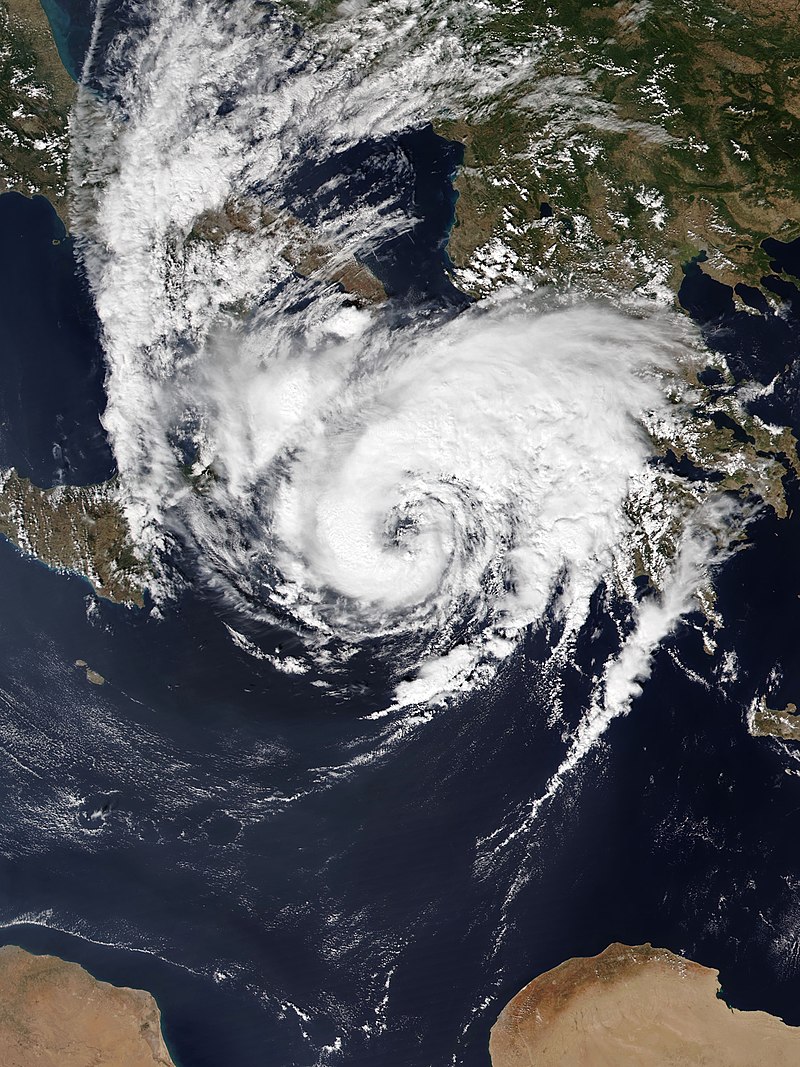Assimilation of Doppler from space in WRF model: application to WIVERN radar for the Medicane Ianos case study
| Speaker: Stefano Federico | 19 Sep 2024 in the large meeting room |

Ianos at its record peak intensity, nearing landfall in Greece on 17 September.
Accurate weather forecasts are important to our daily lives. Wind, cloud and precipitation belong to the fundamental variables in NWP models. The WIVERN (Wind Velocity Radar Nephoscope) mission (Illingworth et al., 2018), for observing global winds, clouds and precipitation, has the opportunity to be the first space-based mission to provide in-cloud winds. It is currently in the phase A of the European Space Agency (ESA) Earth explorer 11 program and, if demonstrated successful, WIVERN data could be beneficial to enhance NWP performance, as long as validate climate statistics.
In this work, we present an assimilation experiment of the WIVERN Doppler (LoS; winds along the Line of Sight) data for the outstanding case of the Medicane Ianos, occurred in mid September 2020.
To this end, we use the following approach: we run the Medicane Ianos with WRF at 4km horizontal resolution using the ECMWF-EPS (European Centre for Medium range Weather Forecast – Ensemble Prediction System) analysis/forecast cycle issued at 12 UTC on 16 September 2020 as initial and boundary conditions. Fifty-one occurrences of the Medicane Ianos (members) are forecast, taking into account for the atmospheric predictability of that day. For all members the trajectory of the Medicane is determined by the minimum surface pressure.
The trajectories are then compared with the reference trajectory determined by the method of Flaounas et al. (2023) and the best member (i.e., the one whose trajectory has the minimum spatial error compared to the reference trajectory) among the 51 WRF simulations, is determined. The Wivern pseudo-observations are then generated for the best member using the Wivern simulator (Battaglia et al., 2022).
Assimilation of HLoS is performed by WRFDA using 3DVar (Federico 2013). The (u,v) wind components are then assimilated in WRF as radiosoundings. Assimilation is performed with a variable repetition cycle to test different degrees of Wivern overpass frequency.
Results show a positive impact of the data assimilation on the simulation of the Ianos trajectory. The distance between the simulations assimilating LoS and the best trajectory are more than halved compared to the control forecasts. Two sensitivity tests aiming at assessing the observation revisiting time on the forecast of the Ianos trajectory will be also presented.
References
- Battaglia, A., et al., 2022, https://doi.org/10.5194/amt-15-3011-2022.
- Federico, S., 2013, https://doi.org/10.5194/amt-6-3563-2013.
- Illingworth, A. J., et al., 2018, DOI: 10.1175/BAMS-D-16-0047.1, 1669-1687.
- Flaounas, E., et al., 2023, https://doi.org/10.5194/wcd-4-639-2023
